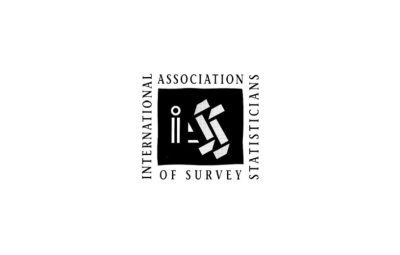Professor Jayanta K. Ghosh, emeritus professor of statistics at Purdue University, former Director of the Indian Statistical Institute, and former President of the International Statistical Institute, passed away at 3:40 AM on 30 September 2017; he was eighty. Professor Ghosh was born on 23 May 1937.
Over a period of nearly sixty years, Professor Ghosh made timely and insightful contributions to a wide swath of theoretical statistics. His earliest work was influenced by Abraham Wald’s invention of the SPRT. As a twenty something, in 1960, he studied the ASN and the efficiency of the sequential t-test, as a part of his Calcutta University PhD dissertation under the supervision of H.K. Nandi. This work influenced the very early work of Malay Ghosh with Pranab Sen on sequential rank tests. A few years later, simultaneously and independently, with Jack Hall and Bob Wijsman, he wrote a fundamental paper formalizing the results of Charles Stein and Don Burkholder on commutativity of reduction by invariance and sufficiency. This work was later followed up by others, including Bob Berk, and was cited in Ferguson’s classic text. Following this work, Professor Ghosh visited Bob Wijsman at Urbana for three years, and had a life long affection for him.
At the same time, CR Rao was publishing his path breaking results on second order efficiency of the MLE among asymptotically normal first order efficient estimates. Around 1970, Professor Ghosh, jointly with his student Kasala Subrahmanyam, began his long journey into higher order asymptotics, and in well known later work with Bimal Sinha, S.N. Joshi, and Sam Wieand, established second order risk optimality of the MLE under essentially all bounded convex loss functions. This work led to expansions for posterior moments and Bayes risks, with Bimal Sinha and S.N. Joshi, in the lines of Richard Johnson, but with differences. It was quite evident in the mid and also the late seventies that, due to the influence of CR Rao or not, Professor Ghosh was an MLE and (perhaps also) an LRT admirer. He saw MLEs as more or less Bayesian objects. In his discussion of Brad Efron’s 1975 curvature paper, Ghosh shows open disdain for frequentist statistics, and likens it to Lewis Carroll’s Chesire cat, all but dead save its ironic grin. It is not clear if he was a fully committed Bayesian already at that point, although he was obviously supportive of Basu’s epic articles on likelihood and information at exactly the same time. Ghosh edited a little Springer monograph compiling Basu’a main work at that point. He was well connected to the Danish statistical group at the same time that Basu was cooperating with them on foundations.
Professor Ghosh’s most well cited and famous work is his 1978 paper with Rabi Bhattacharya on the validity of Edgeworth expansions for smooth functionals in the iid or independent situations. This work has received more than 710 citations. At this asymptotic part of his career, he continued the higher order work with his student Tapas Chandra on Bahadur deficiency. With Bimal Sinha, he adapted the 1981 technique of Larry Brown and Gene Hwang to give a Karlin type (almost) necessary and sufficient condition for second order admissibility of regular estimates. It was around this time that he also started editing Sankhya. Earlier, Professor Ghosh had given a very sweet alternative proof of Bahadur’s classic stochastic representation of quantiles as asymptotically linear statistics, under one less derivative than Jack Kiefer would need, but with an in probability remainder, unlike Kiefer. For many first order results, this suffices. The proof made a clever use of the remainder term in Taylor’s theorem in the integral form. In the mid eighties, Professor Ghosh, to many peoples’ surprise, went into administration and became the Director of the ISI(Indian Statistical Institute). His tenure was marked by prudence and negotiation. He kept difficult to manage groups on board and worked amicably with established leaders such as Deb Kumar Bose as well as the powerful labor groups. As the directorship was coming to an end, he wrote two well known papers with Peter Bickel and Pranab Sen, on Bayesian Bartlett corrections and asymptotics of the log LR process in mixture models. He expressed an interest in coming to Purdue University. Professor Shanti Gupta hired him there. On his arrival, he immediately formed a group, which included Atasi Basu. Very impressively, with the assistance of Sanjib Basu, he converted his NSF-CBMS lectures into the well known monograph on higher order asymptotics. At this time, he accepted the Presidentship of the International Statistical Institute, was given a National Professorship in India, and was made the President of the statistics section of the Indian National Science Congress. He was also elected a Fellow of the Indian National Science Academy. He was a workaholic, literally, during these years.
Professor Ghosh showed his first interests in Bayesian model selection at that time by revisiting Schwarz’s work. The interest later blossomed into full fledged well known work with Jim Berger, Nitai Mukhopadhyay, Rebecca Dooerge, Ritabrata Dutta, and Arijit Chakraborty. Undoubtedly, Professor Ghosh helped popularize and sometimes clarify Jim Berger’s (and Luis Perichhi’s) fractional Bayes factors, and objective priors custom made for model selection. He appeared to not trust the AIC, to like the BIC, and to some peoples’ surprise, consider cross validation as something of a snake oil recipe. One constant exception was the bootstrap. It was interesting to see him defend the bootstrap in seminars where the speaker would criticize it. Unlike all the others, he liked the bootstrap for an unconventional reason. He certainly well understood it that the bootstrap captures the skewness; but it did not impress him so much. He liked the bootstrap because, he said, it lets him avoid calculating jacobians and do integration. Although he enjoyed decision theory and read at least some of the work of Brown, Berger, Lehmann, Kiefer, and Stein, there is no clear evidence that he wanted to work on it seriously. He did provide clarifications and publicity for Bernardo priors, and in a long series of papers with Gauri Datta, Rahul Mukherjee, and Malay Ghosh, established Bayesian (hierarchical) resolutions of various types of NeymanScott quagmires. Many of these things, alongwith modern Bayesian computing, found their way into his Springer text on Bayesian analysis written with Mohan Delampady and Tapas Samanta. Although for a large part of his career, he concentrated on parametric models, one of his prime contributions is the fundamental Springer book with R.V. Ramamoorthi on Bayesian nonparametrics. It was written very very carefully, avoiding the measurability slips. He was well aware of the limits of Ferguson selections, but still, considered them useful, as in admissibility theorems of Malay Ghosh. The DiaconisFreedman work led Ghosh to think of alternatives, like Jeyaram Sethuraman and Kjell Doksum had done. Eventually, jointly with Aad vander Vaart and his student Subhashis Ghoshal, he wrote a major paper on consistency of Ferguson mixtures. This work made artful uses of L1 metric entropy bounds ala Dudley-Gine-van der Vaart-Wellner-van de Geer. Although the strong consistency results often needed a compact support assumption, the paper certainly did fill an important gap in the Bayesian density density estimation literature. Ghosh presented a part of this research at the International Congress of mathematicians. The work was followed up by generalizations of stick breakers with Surya Tokdar and Michael Zhu.
Although a theoretician, already in the early eighties, Ghosh had an interest in modeling and looking at data. He used to regularly collaborate with Bijoy Singha Mazumder and Supriya Sengupta on sediment transportation and grain size distributions and publish in the geology journals. His research and also his classroom lectures took a more data oriented turn around 2005 or so. In collaborative work with Jyoti Datta, he did some data analysis or simulation type work, sometimes Bayesian. He gave several applied Bayesian courses at Purdue. At Purdue alone, he supervised the PhD dissertation of about 20 students. At the inspiration of Vijay Nair, he wrote a historical article on statistics in India. He was visibly proud of the heritage of the ISI, and often mentioned in conversation students and colleagues there, Raghu Varadhan, Somesh Bagchi, Rajeeva Karandikar, Partha Majumdar, Ani Adhikari, Pulakesh Maiti, and others. The government of India gave him the Padma Shree award four years ago, and during the Directorship of Bimal Roy, the ISI gave him an honorary D.Sc. degree. Subhashis Ghoshal and Bertrand Clarke edited an IMS volume in his honor. In the post CR Rao era, and following the departures of Basu, Malay Ghosh, Bimal Sinha, and Jogesh Babu, Professor Ghosh acted as a unique coalescing force for Indian statistics within India. He served as a hugely useful bridge between Indian statistics and statistics in the west. Two important examples are his organizing roles in the 1974 conference at the ISI in Calcutta on Recent Trends in Statistics, and the 1980 conference at the ISI in Delhi in honor of C.R. Rao’s sixtieth birthday. Numerous distinguished international statisticians and probabilists attended these two conferences. ISI students wanting to settle in the US always tried to get a letter from him. A former student of Bill Strawderman asked him for one in the late seventies. Ghosh asked him to come for a quiz at his office on one day during his lunch hour. When on the stated day the student arrived, he found that Ghosh had forgotten about the quiz. The student says that Ghosh remarked that this reminds him that he must eat his lunch, and wrote a one line quiz on his chalkboard, which said ’State and prove a uniform strong law you know.’ The boy didn’t have a clue. He scribbled the word ’Theorem’ on a page and after some time, told Ghosh he needs to make a quick trip to the restroom. Luckily, close by, he found Jogesh Babu, and Babu told him that Glivenko-Cantelli is one such and the proof is easy because of monotonicity. The student returned, and finished his quiz with the answer that Glivenko-Cantelli is an obvious example and the proof is immediate due to monotonicity. Ghosh gave him a recommendation,and the student did get admitted to Rutgers. Ghosh was a private person, but maintained committed friendships with several Indian statisticians, Gauri and Rabi Bhattacharya, Malay Ghosh, Bimal and Bikas Sinha, Asit Basu, Sati and Mukul Mazumdar, Pranab Sen, R.V. Ramamoorthi, Soutir Chatterjee, Surya Tokdar, Dipak Dey, Gaurisankar Datta, and others. He was well read in both Indian and western literature.
He was fond of Tagore’s music, those that had a spiritual tone, although in his personal life he showed no particular religious inclinations. He was spectacularly devoted to his family and was an exemplary father and husband. His wife, Ira Ghosh, passed away in September, 2017. In a clearly distinguished career, Professor Ghosh found very good problems to solve for several decades, influenced the work of various spectra of statisticians at different times, was an undisputed leader of Indian statistics, did his part as an administrator and editor, and succeeded in producing an enviable number of successful students. Very few know that he co-advised the PhD thesis of BV Rao, jointly with Askok Maitra; BV Rao had solved Ulam’s problem in his thesis. His other well known students include Jogesh Babu, Subhashis Ghoshal, Kamal Roy, R.V. Ramamoorthi, Surya Tokdar, Tapas Chandra, P. Jeganathan, Tapas Samanta, C. Srinivasan, Kasala Subrahmanyam, Krishnan Unni, S.N. Joshi, Atasi Basu, Arijit Chakraborty, Jyoti Datta, Ryan Martin, Jayson Wilbur, Ritabrata Dutta, Jessie Jeng.
Anirban DasGupta




